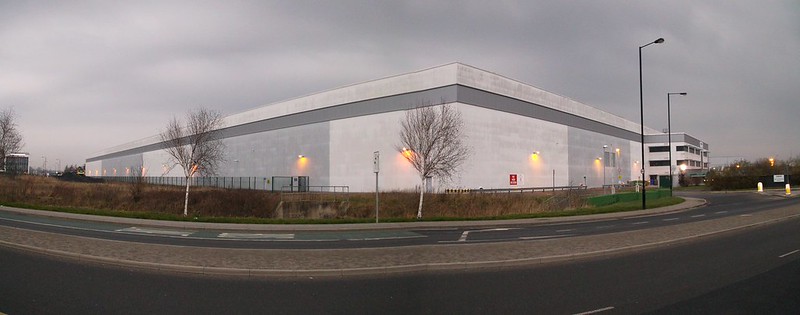The State We're In
Helping New Jersey towns tackle warehouse sprawl
By Tom Gilbert, Co-Executive Director
According to an old adage, “an ounce of prevention is worth a pound of cure.” Similarly, one should always “look before you leap.” In essence, plan ahead!
That’s exactly the advice being given to New Jersey municipalities to help them deal with an onslaught of warehouse proposals.
The State Planning Commission just released a series of guidance documents to help towns educate themselves so they can thoroughly consider the impacts of warehouses. New Jersey is a “home rule” state, so most decisions affecting land-use are made at the local level. Our state also has a history of statewide and regional planning, which is often needed to address challenges that municipalities can’t deal with on their own.
Throughout this state we’re in, the growth of e-commerce and rising consumer expectations for immediate delivery have created a booming demand for new sites for warehouses, distribution centers and fulfillment centers. Development pressure on non-preserved farmland and open space is growing.
“With its strategic geographic position, skilled workforce, major consumer markets, and robust transportation infrastructure that serves the entire Northeast, New Jersey is an ideal location for the warehousing and goods movement industries,” the report said.
As the report notes, the upside of the warehouse industry is that it contributes economic activity, jobs and tax ratables. As a result, many towns are tempted by the prospect of an easy way to bump property tax revenues without incurring expenses like sending more children to public schools.
But many other towns – often bolstered by vehement citizen opposition – are concerned that warehouse development will lead to the loss of prime farmland, truck traffic, noise, dust, air pollution and potential flooding that would irreparably harm the quality of life in their communities.
“These public health impacts tend to be concentrated in low-income and minority communities that are already overburdened because of New Jersey’s long industrial legacy,” said the report. “Thus, proposals for new projects that can worsen public health and safety raise environmental justice implications.”
The guidance documents encourage towns to take a regional approach to planning and siting warehouses. Throughout New Jersey’s zoning history, there have been many cases of high-impact uses being sited along municipal borders – much to the frustration of neighboring towns that have no say, collect no taxes, but suffer from negative impacts.
The guidance documents provide a detailed checklist of factors for towns to consider when developing or updating their master plans and zoning ordinances.
Here are a few takeaways:
- Warehouse development comes in many shapes and sizes, and zoning should evolve to keep up with the changing variety of uses and trends. Towns should update and refine their regulations to ensure that they accurately assess their ability to handle truck traffic and related impacts. They must also determine whether water and sewer infrastructure have the capacity to meet new demand, and even consider whether local firefighters could battle a blaze in a “high cube” warehouse.
- Zoning should be very specific, not broad. “Many towns in New Jersey are finding that their communities are particularly vulnerable to poorly sited and scaled warehousing projects because they zoned large areas of their community, particularly farmland in rural areas, for broadly applied ‘light industrial’ uses,” the report notes. In fact, much of the current outcry comes in cases where warehouse projects largely conform to local zoning.
- Towns are limited in what kind of “off-site” improvements they can require of developers, including improvements to roads and other infrastructure. That is why it is best for towns to study traffic-intensive uses like warehouses as part of a targeted transportation corridor plan, or update their traffic circulation plans in coordination with state, county, and regional agency partners. Traffic and road impact studies should be required both before and after warehouses are built.
- Towns should be aware that emissions of air pollutants and greenhouse gases from diesel-powered delivery vans and tractor-trailers represent the most substantial environmental and health impacts from warehouse facilities. While warehouses aren’t covered in the state’s Environmental Justice Law, municipalities should take into account the impacts of air pollution on overburdened communities.
The guidance documents are a good first step to encourage better planning for warehouse development, but alone they aren’t likely to stem the tide of warehouse development on our best farmland or in communities already overburdened by pollution.
E-commerce and accelerated home delivery options aren’t going away, and neither is the demand for more warehouses and distribution centers. Municipal officials throughout the state would be wise to read these guidance documents carefully, plan ahead and make informed decisions!
More tools will be needed to fix this problem, such as model ordinances, multi-municipal planning, and carrots or sticks from the state to align warehouse development with the guidance.
Let’s not wait until even more damage is done to our best farmland and overburdened communities before tackling this significant land use challenge in the serious, comprehensive manner that is required.
To download the reports, go to the State Planning Commission website at https://nj.gov/state/planning/index.shtml and click on “Warehouse Guidance.” Thirteen separate documents are available, including reports on warehouse types, traffic and road planning, public health and overburdened communities, municipal considerations, sustainable design and best practices.
And to learn more about preserving New Jersey’s land and natural resources – including open space and farmland – visit the New Jersey Conservation Foundation website at www.njconservation.org or contact me at info@njconservation.org.
About the Authors
Alison Mitchell
Co-Executive Director
John S. Watson, Jr.
Co-Executive Director
Tom Gilbert
Co-Executive Director, 2022-2023
Michele S. Byers
Executive Director, 1999-2021
View their full bios here.
Filter
Get The Latest News
From The Garden State
In the
News

